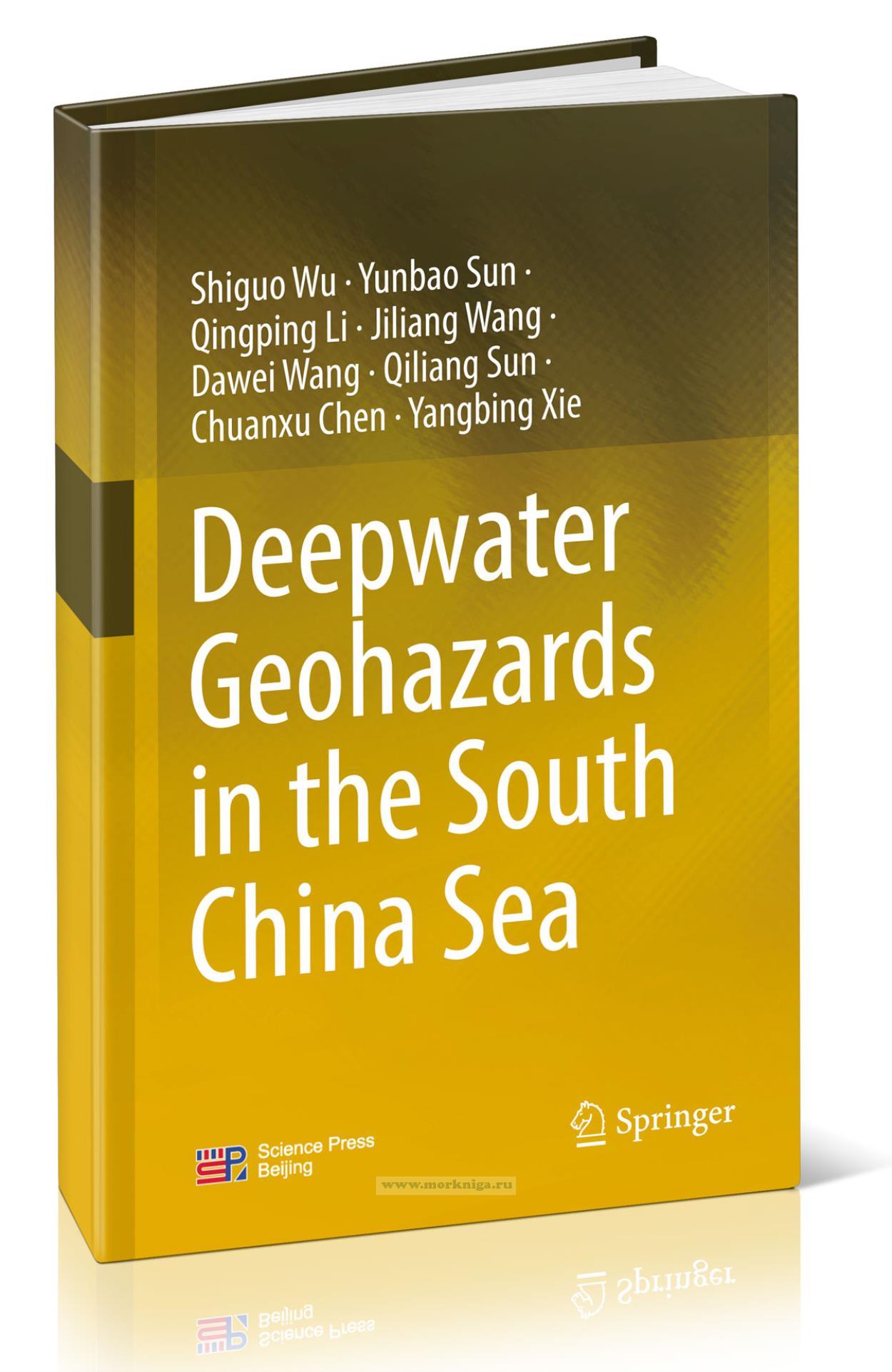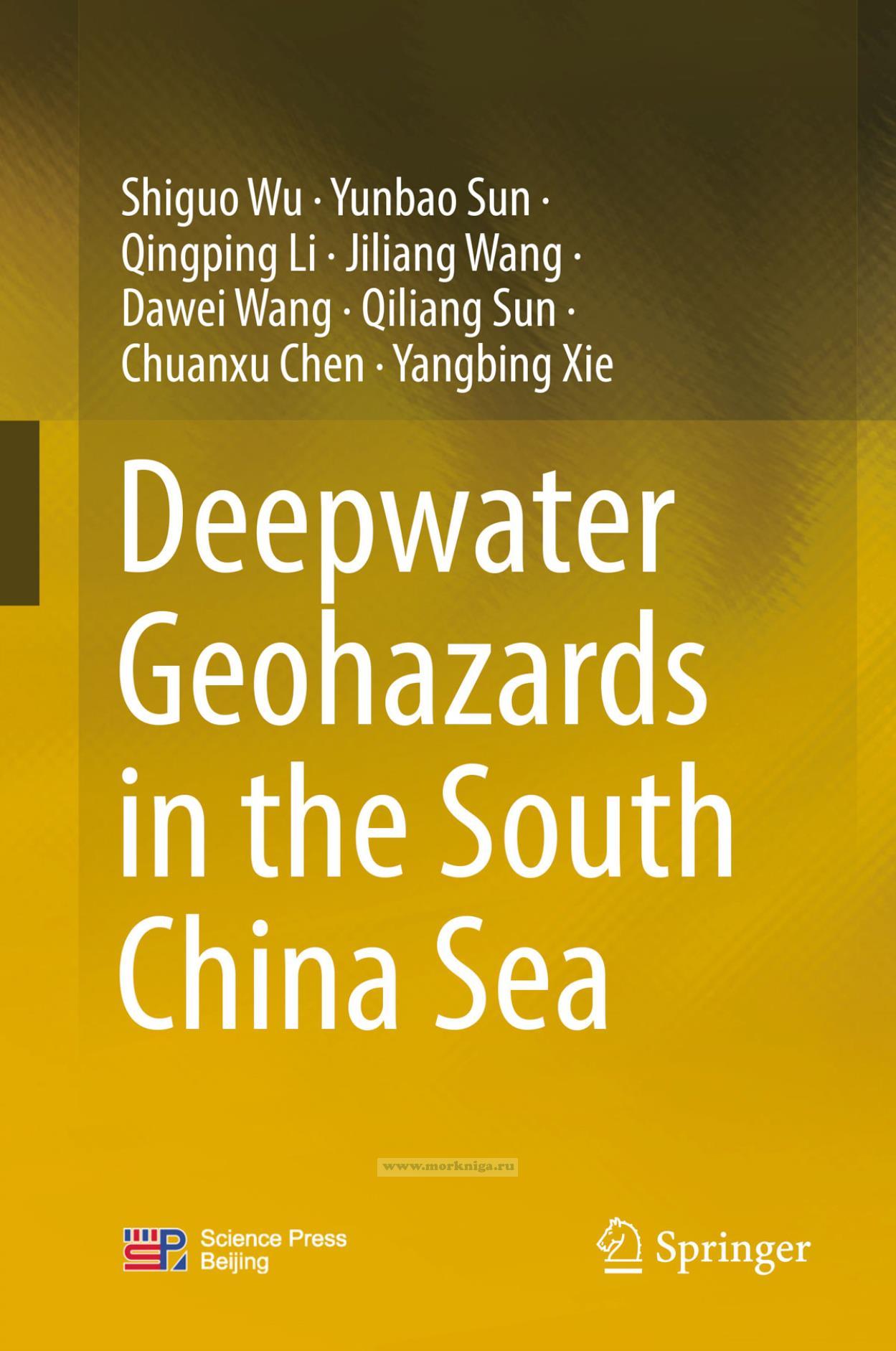Сб с 10 до 16
Deepwater Geohazards in the South China Sea/Глубоководные геологические опасности в Южно-Китайском море
Книга на английском языке
The research team of Prof. Wu Shiguo at the Institute of Deep-Sea Science and Engineering, Chinese Academy of Sciences, has long been on deepwater geohazards in the South China Sea. Significant achievements have been made in the identification, formation mechanism, and prediction techniques of deepwater geological hazards, such as submarine landslides, gas hydrate, shallow gas, shallow water flow, and earthquake-induced tsunamis in the South China Sea. The book not only reflects the research results of the team in the South China Sea deepwater geological hazards but also summarizes the research progress in the world ocean, which will deepen our understanding of deepwater geohazards. It is of great significance to deepwater oil, gas, and gas hydrate exploration and development. The publication of the book will play a tossing out of a brick to acquire a jade gem role in attracting scientists to actively participate in this exploration so that we have made an enormous advance in the field of the discipline.
Contents
1 Introduction
1.1 Definition of Deepwater Geohazards
1.2 History and Present Situation of Deepwater Geohazard
1.2.1 Research History of Deepwater Geohazard
1.2.2 Advances in the Prediction of Deep Water Geohazards
1.2.3 Progress of Deepwater Geological Disaster Research in China
1.3 Types of Deepwater Geohazards
1.3.1 Submarine Landslide
1.3.2 Gas Hydrate
1.3.3 Shallow Gas
1.3.4 Shallow Water Flow
1.3.5 Earthquake and Tsunami
1.4 Key Technologies for Monitoring and Early Warning of Deepwater Geological Hazards
1.4.1 Integrated Geophysics Identification and Prediction Techniques
1.4.2 In Situ Monitoring Technology
1.4.3 Numerical Simulation and Quantitative Risk Assessment Techniques
1.5 Deepwater Geological Hazards in the South China Sea
1.5.1 Submarine Landslide
1.5.2 Gas Hydrate Disasters
1.5.3 Shallow Gas
1.5.4 Shallow Water Flow
1.5.5 Earthquake Tsunami Deposit
References
2 Submarine Landslides
2.1 The Concept of Submarine Landslides
2.2 Classification of Submarine Landslides
2.3 Trigger Mechanism of Submarine Landslide
2.3.1 Earthquake Activity
2.3.2 Sediments Deposit Rapidly
2.3.3 Submarine Volcanic Activity
2.3.4 Natural Gas Hydrate Decomposition
2.3.5 Active Tectonics
2.3.6 Sharpening Effect
2.4 Identification Characteristics of a Submarine Landslide
2.4.1 Investigation Methods
2.4.2 Geophysical Response Characteristics
2. 5 Shenhu Submarine Landslide
2.5.1 Structure and Identification of Shenhu Submarine Landslide
2.5.2 Control Factors for Landslides
2.5.3 Developmental Pattern of Submarine Landslides
2. 6 Baiyun Submarine Landslide
2.6.1 Morphology and Seismic Response Characteristics of Landslide Area
2.6.2 Definition of Time of Submarine Landslide
2.6.3 Controlling Factors of Submarine Landslide
2.6.4 Submarine Landslide Development Model
2.7 Deepwater Submarine Landslides in Qiongdongnan Basin
2.7.1 Seismic Identification Characteristics of MTDs in Qiongdongnan Basin
2.7.2 Discussion on Genesis and Mechanism
References
3 Gas Hydrate Disasters
3.1 Concepts and Classification of Gas Hydrate
3.1.1 Hydrate Formation Hazards
3.1.2 Hydrate Decomposition Hazard
3.2 Gas Hydrate Disaster Trigger Mechanism and Feature Identification
3.2.1 Hydrate Disaster Triggering Mechanism
3.2.2 Hydrate Signature Recognition
3.3 Case Studies
3.3.1 Geological Framework
3.3.2 Analysis of Physical Properties of Hydrate-Bearing Sediments
3.3.3 Mathematical Model
3.3.4 Effect of Gas Hydrate on Submarine Landslide
References
4 Shallow Gas Disasters
4.1 The Concept and Types of Shallow Gas
4.2 Hazard Mechanism of Shallow Gas
4.3 Identification of Shallow Gas
4.3.1 Seismic Response Characteristics
4.3.2 Special Geological Marks Associated with Shallow Gas
4.4 Formation and Distribution of Shallow Gas in Baiyun Sag, Northern South China Sea
4.4.1 Geological Setting of Shallow Gas Formation
4.4.2 Identification and Distribution of Shallow Gas in Baiyun Depression
References
5 Shallow Water Flow
5.1 Concept and Classification of Shallow Water Flow
5.2 The Trigger Mechanism of Shallow Water Flows
5.2.1 Sandy Sediments
5.2.2 Effective Sealing Layer
5.2.3 Abnormal Pressure
5.3 Identification of Geophysics Characteristics of SWF
5.3.1 Petrophysical Properties
5.3.2 Seismic Reflection Characteristics
5.3.3 Stress Characteristics
5.3.4 The Geological Setting of SWF Occurrence
5.3.5 Identification of Shallow Water Geophysics
5.3.6 Numerical Simulation of Pressure Field
References
6 South China Sea Earthquake and Tsunami Disaster
6.1 Generation and Spread of Tsunamis
6.2 Earthquake and Tsunami Disasters in the South China Sea
6.2.1 Historical Earthquakes and Tsunamis in the South China Sea
6.2.2 Structural Study of the Tsunami Source Area in the South China Sea
6.2.3 Numerical Simulations of Tsunamis and Tsunami Warnings
6.2.4 Results of Tsunami Simulation in the South China Sea
6.3 Conclusions
References

